 With the eventual depletion of natural resources and the uncertain international situation, there is an increasing worldwide need for green, sustainable, energy efficient, stylish and affordable mechanical/electrical systems. Of the three disciplines now regulated by the national ASHRAE / IESNA / ANSI1Standard 90.1 (the United States’ energy standard for other than low-rise residential buildings, which have their own standard), lighting has made the most strides in complying. New and existing buildings, plus alterations and additions now have restrictions. Standard 90.1 is the basis for LEED, IECC and state building codes.
With the eventual depletion of natural resources and the uncertain international situation, there is an increasing worldwide need for green, sustainable, energy efficient, stylish and affordable mechanical/electrical systems. Of the three disciplines now regulated by the national ASHRAE / IESNA / ANSI1Standard 90.1 (the United States’ energy standard for other than low-rise residential buildings, which have their own standard), lighting has made the most strides in complying. New and existing buildings, plus alterations and additions now have restrictions. Standard 90.1 is the basis for LEED, IECC and state building codes.
Lighting is essential to see or do anything. Good lighting enhances all design and increases productivity, safety and personal comfort. However, badly created lighting could also consume up to 45% of a building’s energy and hasten disintegration of the fugitive organic materials (anything that once grew) that are components of the structure and its contents.
Because of the cultural and monetary value of permanent architectural installations, lighting is especially critical not only to conserve energy and materials, but also for viewers’ comfort. In addition to the conventional incandescent, halogen and fluorescent (T8, T5 and T5HO) lamps, there are also many alternate technologies that have been employed abroad for decades. Nevertheless, if the most energy efficient method best suited for the particular application is chosen, sophisticated and affordable designcanbe created within the increasing energy conservation restrictions.
Since the study of illumination is a full-time, lifelong profession, this paper is not intended to turn readers into instant engineers or electricians. It simply points out the need for awareness of what is available to do the job. Then specialists can be called in for guidance in communication, coordination and cooperation for the whole project team.
Not only historic properties, collections and museum display areas need proper lighting. Conservation labs and factories have to determine correct colors and shapes. Retail shops either entice buyers in with imaginative décor, or drive them away with hot, glaring, energy-guzzling light lacking interesting contrast. How many restaurants have lighting that is either so hot it cooks the patrons like the food, or so dim that a miner’s cap is needed to see the menu and the cuisine?Many hotel bedrooms force the tenant to lean out over the bed in order to have enough light to read by. Storage areas, offices, food service, hospitality, public assembly spaces, and corridors should have several different levels of light suited for the purpose. Indeed, every space should have at least two light levels—one so an individual will not fall over the furniture, and another to allow her to see easily.
Two of the most highly advertised new products are compact fluorescents (CFLs) and light emitting diodes (LEDs), andthe latest, organic OLEDs. There is a worldwide and continuing discussion about them. Like the simultaneous work on incandescents by Edison in the United States and Swan in England, in October, 2008, after seeing the Broadway play called “To Be or Not To Be,” I titled my Kansas City talk “To LED or not to LED.” The same caption, written by Ann Reo, appeared in the Fall 2008 Architectural Lighting magazine.
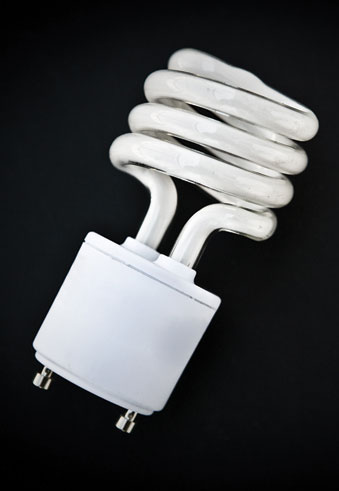
Figure 1. Compact fluorescent (CFLs)
Compact Fluorescents (CFLs)
Contrary to current publicity, incandescent lamps cannot be completely replaced in all uses. In fact, much of the massive advertisingfor CFLs and LEDs does not appear to give complete data enabling the correct choice. The right selection cannot be done unlessallof the properties are known about each type.
Recognizing the discrepancies, CFLs are just now being made for three-way applications, dimming ability and with a wider range Kelvin color selections.2If not instant start, they may be unsuitable and even unsafe for constant on–off uses. They could emit more damaging ultraviolet light (that fades irreversibly) than incandescent lamps, and they may not fit into existing fixtures. The fact that they require more manufacturing steps makes them much more expensive than incandescents.
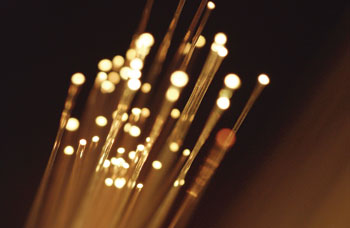
Figure 2. Glass fibre optics
The CFL lamps typically have a lower power factor (PF). Tungsten lamps are resistive with a unity (1.0) PF, but CFLs are normally at (0.50) PF lagging or leading, depending on the type of ballast used. This means that the like-for-like comparison normally given for CFLs is wrong, and volt/amperes, rather than watts, are the correct measure. CFLs take more current on a volt/ampere (VA) scale, so with greatly increased use, they may cause issues for power stations that are on a kilowatt (kW) basis. With extensive CFL use, the existing meters will not accurately reflect the more-than-anticipated current taken, which has an active (working) and reactive (non-working) component.
CFLs also generate harmful electrical noise, like harmonics (3rd, 6th, 9th, etc.) that could disrupt electric service under certain circumstances. Disposal of CFLs must be carefully done because they contain phosphors and mercury. CFLs can be voltage sensitive. If the line voltage drops below the stated voltage, the lamps could extinguish.
Light Emitting Diodes (LEDs)
Light emitting diodes (LEDs) use electrical energy to make light. They are semiconductors called solid state lighting (SSL). Without getting into the technical explanation of anodes and cathodes, dies/chips, polarization, red/green/blue (RGB), dangers similar to lasers, heat sinks, drivers, etc., LEDs are an array of components, sometimes from many different sources. Currently due to lack of standards, it is still difficult to compare LEDs with conventional systems. There are other imaginative technologies like pulse-start metal halides and digital addressable lighting interfaces (DALI), best suited for fluorescents in commercial/industrial venues.
Originally used for traffic signals and then decorative lighting, LEDs are very innovative; butthey are not there yet.Yes, they are energy efficient, but not as much as glass fibre optics functional architectural lighting, which is still one of the most energy efficient, sophisticated technologies now known.Two of the drawbacks still to be researched for LEDs are sustainability and the need for additional energy for heat dissipation.
After a client has raised the money for new lighting, LEDs may be effective for only five years. They have a promised life of only up to ten years, after which the entire lighting system may have to be replaced.One of the immutable physical laws of optics is that light diminishes with distance thrown, age and environmental conditions.As LEDs age, their light diminishes to 70% of original level. Then they might fail to satisfy the carefully designed lighting plan originally put in place. If the customer can afford renewing illumination this often, the next detail is that quality and dependability are still questionable for this most expensive way of lighting. If you decide on an extremely low price for LEDs, service may be inadequate, erratic and short-lived.
LED effectiveness (efficacy) is about the same as halogen (one of the most energy-inefficient sources) but today much more expensive. Ambient temperatures can dramatically affect its lamp life. Thus outdoor types are much more expensive than indoor ones. LEDs are also sensitive to voltage changes, vibration and moisture.
A U.S. Department of Energy report released January 2009, states a comparison with T12 and T8 fluorescent lamps and LED linear replacement lamps. It includes:
1. “The comparatively low light output of this type could result in unacceptably low illumination levels in retrofit applications.
2. LED linear replacements achieved low lumen output efficacy, which limited their overall performance to levels significantly below those of fluorescent systems.
3. Testing at this time shows that LED technology is not yet ready to displace linear fluorescent lamps as replacement light sources in recessed troffers for general interior lighting.”
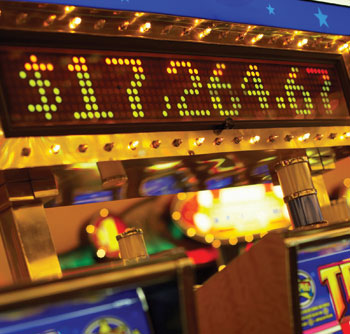
The LED color white is still in a state of flux, and whites could change unexpectedly. White could be created by red/blue/green, or blue with yellow phosphor, or violet with yellow phosphor. Each method has different characteristics. Some whites are blindingly glaring, while others have such a low Kelvin color temperature, and are so yellow, they make blues and greens look muddy.
Here are questions to ask when specifying LEDs:
1. Are all the components, if obtained from different manufacturers, compatible?
2. If a component needs replacing before expected, what is the remedy offered by the maker?
3. Are independent testing laboratories involved?
4. What is the sustainable rated life of the system?
5. What is the dependable color stability and color shift?
6. In what maximum temperature can the LEDs work safely?
7. Is the heat sink adequate to dissipate the heat created by light?
8. Can the assembly be used face up, or submerged?
9. Can the lighting be installed so that it is easily accessible for replacement?
10. Does the warranty coverallcomponents?
11. Will the installation adversely affect the original design and fabric of the structure or lighting fixture?
12. Will replacement components match the existing system in color and brightness?
13. Is the right Kelvin color temperature for the purpose available in LEDs?
14. Is vibration a factor?
The choice of a reputable, not the lowest price, untested supplier avoids unexpected failures from (a) poor solder connections, (b) carelessly made LEDs and assemblies, and (c) undependable electronic components from other sources.
As with any lighting project, mockups are critical, especially if more than one supplier is being considered. All should be compared at the same time. LEDs can never be placed in such close quarters that the heat is not dissipated properly. The wrong use of LEDs, where they are not the best solution, will be costly and aggravating.
Glass Fibre Optics
If it is the spectacular Las Vegas approach you are after, the same automated special effects of color, motion and dimming can be obtained using a DMX512 theatrical computer with glass fibre optics functional architectural lighting.Unlike the millions of feet of glass fibre optics used for communications, the glass fibre optics for lighting is not interchangeable with the communication type. Glass fibre optics lighting, used for decades abroad, allows great creativity of design. It is completely sustainable as long as needed by just replacing the 18-month (6,000-hour) metal halide lamps which power up to 32 points of equal level light. Cool, figuratively and literally, glass fibre optics can be used safely and reliably under water, and outdoors. This completely different source/system delivers light exactly where needed. It can be maintained without disturbing pedestrian traffic or displays.
Both high-leveldirectional(spotlight) beams, and lower-levelambient(general) coverage are provided by this miniaturized technology that is well suited for historic and contemporary applications. Glass is not affected by the heat of the lamp, and can be reused for changing purposes, or retrofit into most existing fixtures. Substantial savings in installation, maintenance and operation make for prompt payback on initial investment, and continuing economies thereafter during the long life cycle of this source/system.
Match the Lighting Method to the Application
Pick the energy efficient lighting method that is best suited for a particular application. It is up to the designer to choose what works best within the increasing conservation restrictions. Otherwise, lack of practical knowledge in what alternate methods are available and terminal inertia to change procedures will cause great cost overruns and undue stress, will ruin original design and fabric, will possibly become large insurance claims and cause unnecessarily wasted energy.
No matter what illumination is used, certain factors must be in place for success. They include sustainability for permanent architectural uses; knowledge of the actual cost of operation over theentirelife cycle of the system; suitable light levels; concern for good design; easy maintenance; adequate financial incentives to encourage upgrading, and penalties for non-compliance; sensible building codes and regulations that pertain to the type and age of the structure; and public awareness and support for the concept of conservation.
1. American Society of Heating, Refrigerating, Air Conditioning Engineers/The Illuminating Engineering Society of North America/American National Standards Institute, with the U. S. Department of Energy
2. Additional CFL data courtesy of Peter Lawson-Smith, the eminent British engineer.
This paper was checked for technical accuracy by Carl Watson, PE, LC.











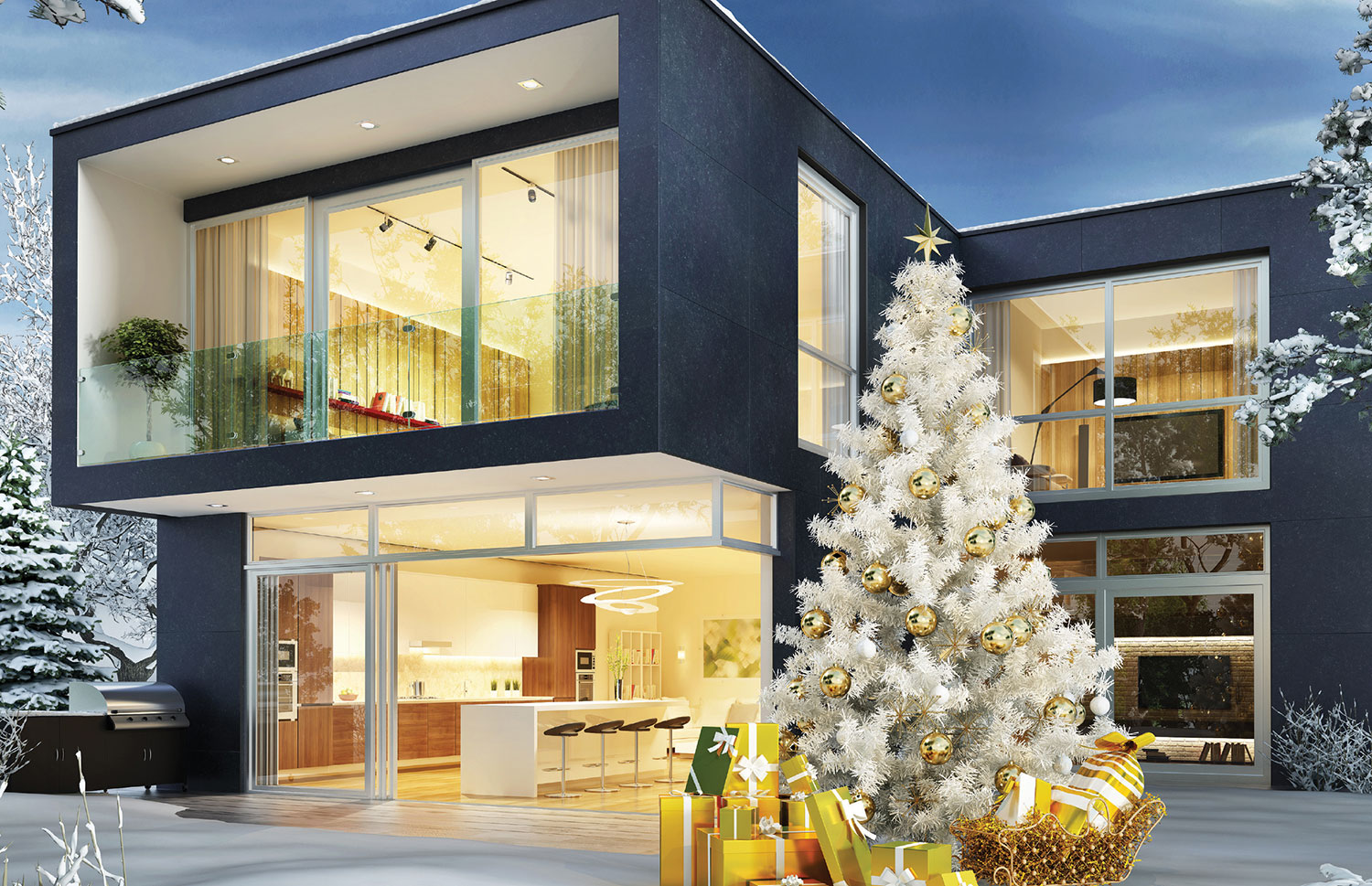
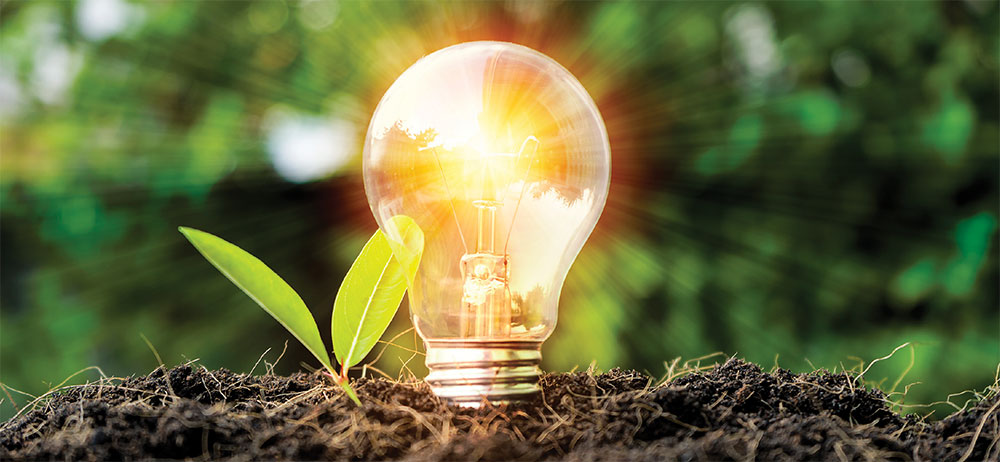

Find Us on Socials